Why Do Squirrels Nip Off Branches – What’s REALLY Happening?
Most people think of squirrels as cute, adorable creatures that spend their days collecting acorns and frolicking from tree to tree. However, from time to time, you may notice that parts of the tree have been gnawed off by a squirrel. We tend to assume that there is some sinister reason why they’re doing it, but in reality, these rodents are simply behaving like any other creature with an instinct to survive. Squirrels are protecting their territory, food supply, and nesting sites. Let’s look at more reasons – why do squirrels nip off branches?
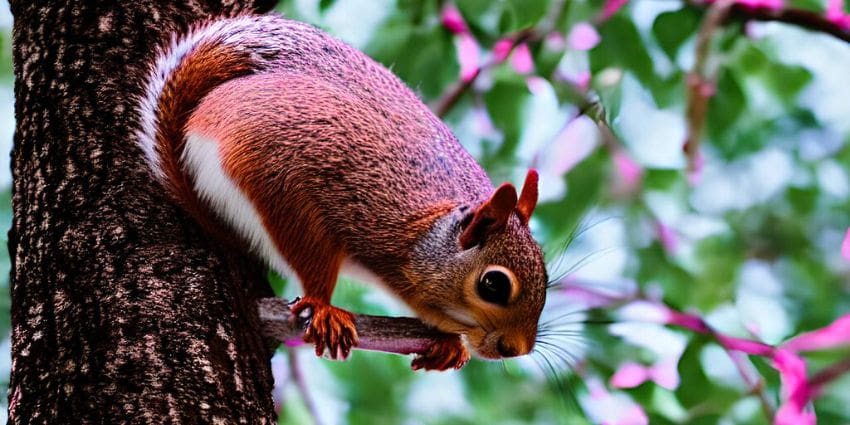
Why Do Squirrels Nip Off Branches?
Because eating tree bark can help protect squirrels from certain diseases, reduce stress levels, and keep their teeth healthy.
What is the Stuff that Makes up Tree Bark?
Tree bark is the rough outer covering that makes up the outside of the tree and causes it to look the way it does. Tree bark is very diverse, and each type has a different type of bark.
Each type of tree has its unique mix of vital elements embedded in its cellulose bark, making it unique. Squirrels rely on bark as a substantial portion of their diet, particularly during winter. Up to 40% of their diet may consist of tree bark.
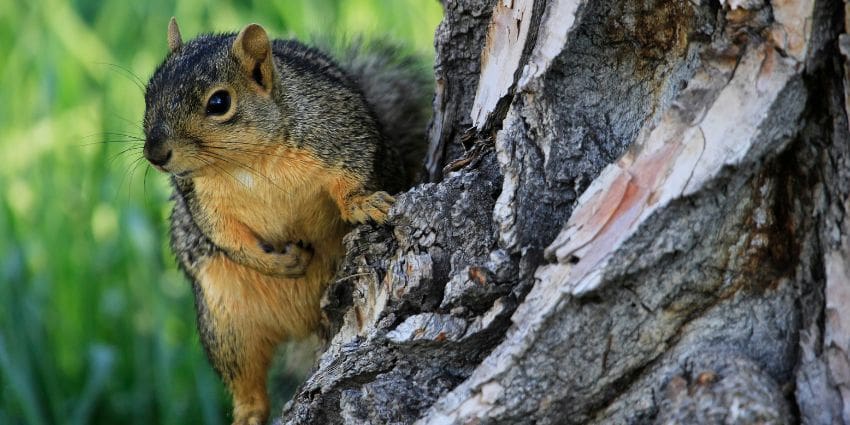
Do Squirrels Chew Off Branches – Benefits
Do squirrels chew off branches? Sure, squirrels eat tree bark to help maintain a healthy diet. The nutritional benefits of eating bark include a higher concentration of minerals and vitamins compared to other foods, like grass.
Benefits of Eating Tree Sap
If a tree contains sap, squirrels benefit from the sap’s nutrients. Here are some of the nutrients that squirrels need in their diet.
- Selenium and Zinc – keep the immune system strong
- Vitamin C – reduces the risk of getting a respiratory infection (helpful during the winter months)
- Vitamin E – to keep the heart healthy and maintain healthy skin
- Calcium – strengthen their bones and teeth by offering a squirrel a cuttlebone.
- Potassium – overall health and keeping the nervous system functioning
- Iron – helps make red blood cells which carry oxygen
You can offer a squirrel a calcium supplement to chew on like a cuttlebone. The same kind you would give to a parakeet.
Discover Cuttlebones for Squirrels on Amazon
Why Do Squirrels Chew Branches Off Trees?
To Prevent Disease
Scientists think that eating tree bark can help protect squirrels from certain diseases. The bark of certain trees, like the cedar, contains natural compounds that can kill bacteria and fungi. By eating small amounts of bark, squirrels may be able to ward off infection.
Do Squirrels Mark their Territory?
Yes, squirrels do mark their territory. They do this by urinating on trees, rocks, and other objects in their environment. Urinating on objects helps them to keep track of their territory boundaries and to warn off other squirrels who might try to invade their space. Urine scent marking is a crucial part of squirrels’ social behavior, which they do regularly.
Squirrels are very selective about the trees they choose to gnaw on, and each gnaws mark signals other squirrels about who owns that tree.
To Maintain their Ever-Growing Teeth
Squirrels must maintain their ever-growing incisors. As these teeth grow, they must gnaw on something to keep them from becoming too long and getting in the way, which could cause a slow and painful death from malocclusion.
The fiber in the bark acts like toothpaste and helps remove plaque. — helping to clean and condition the squirrels’ teeth.
When squirrels are under stress, their bodies release hormones that can damage their teeth. Chewing on bark may help relieve some of this stress and protect their teeth.
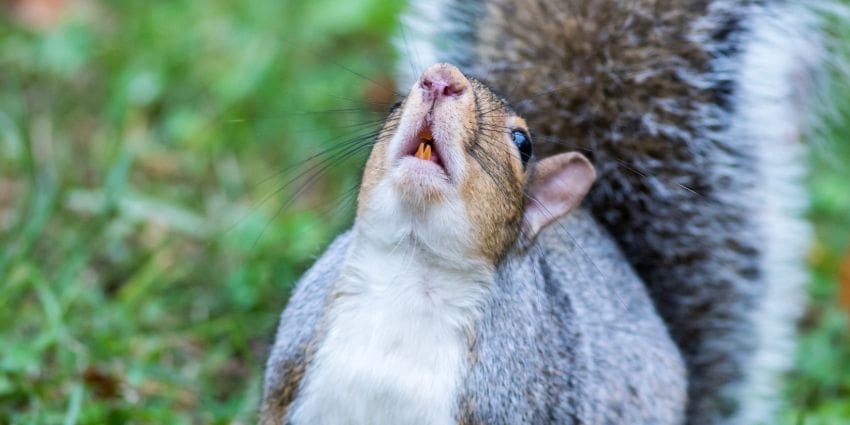
To Help Build Their Nests
Squirrels make nests called dreys; these dreys can vary in size and can be made out of various materials, including twigs, leaves, moss, bark, and nipped-off branches, depending on what’s available.
Using nipped-off branches is helpful because the branches help to insulate the nests from cold winds. Squirrels use branches and twigs to create a basket. This basket becomes the foundation of the nest and is a central structural element.
Once the drey is completed, the squirrels will often collect the discarded bark and use it to line the floor of their drey/nest. The squirrels can keep their young warm and protected by collecting this bark and laying it on the nest floor.
They then use softer materials on top of the branches and twigs. As the young grow, they will stay in the nest for an extended period.
Relief for a Stressed Squirrel
Chewing on wood is thought to have a calming effect on a stressed squirrel. The act of chewing helps to release endorphins, which have a calming effect and act as a source of comfort and security.
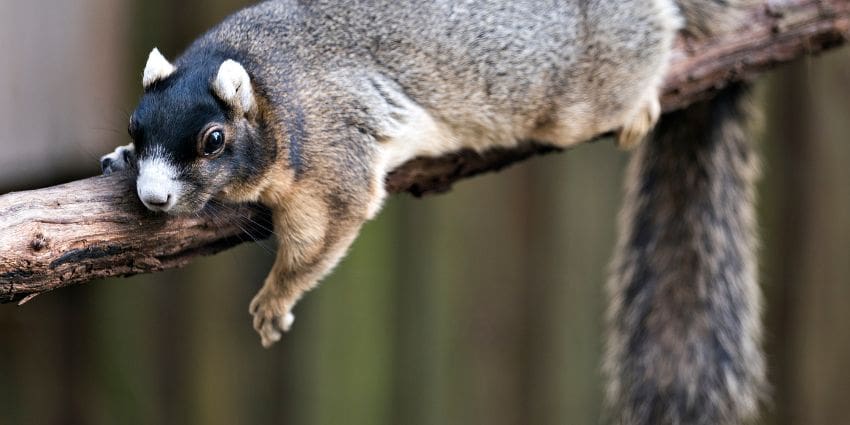
For Food
When food becomes scarce, especially in winter, squirrels have less access to the foods they usually eat. If foods like berries, seeds, and nuts start to deplete, the squirrel will start to look for other food sources. A squirrel will remove the branches of a tree to access the cambium layer. This is the tissue layer that houses the cells needed for plant growth. This layer is rich in nutrients and sugars.
Help Malocclusion in Squirrels
There is some evidence that squirrels may chew on tree branches to help alleviate the symptoms of malocclusion, a condition where the teeth do not line up correctly. Chewing on branches can help to grind down the teeth and make them fit more snugly together. This may help to reduce pain and inflammation associated with malocclusion.
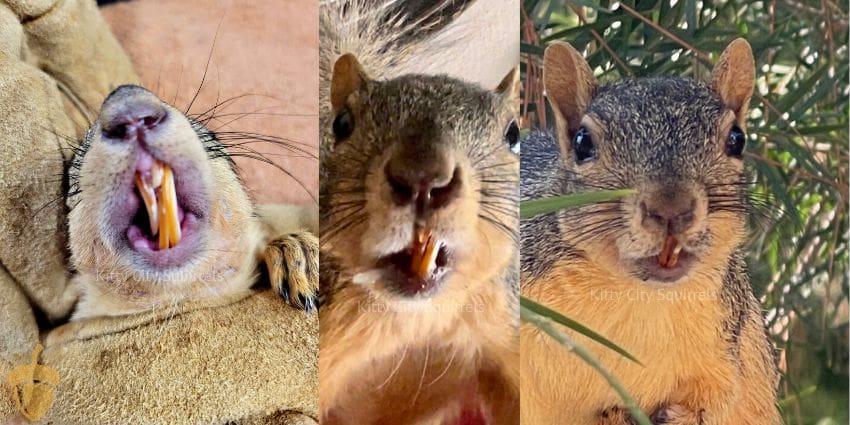
Chewing on branches can also help keep the teeth clean and free of plaque and tartar buildup.
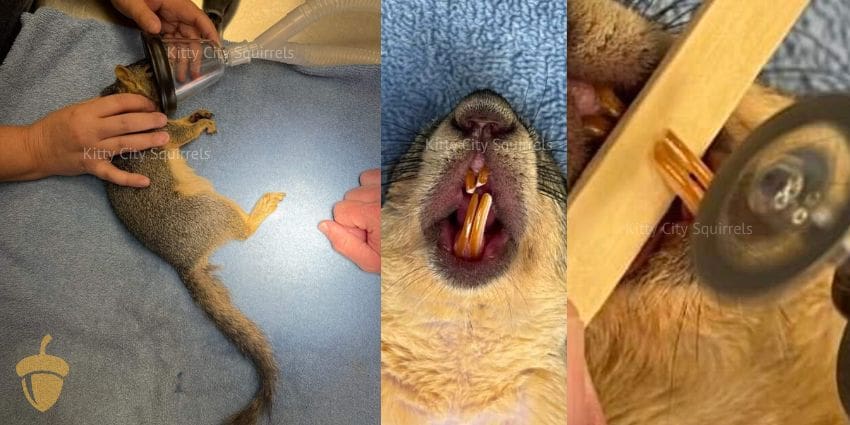
Do Squirrels Strip Bark?
Yes, squirrels do eat tree bark. While tree bark isn’t the most nutrient-rich food source, it can provide squirrels with a small amount of sustenance, especially in times of scarcity. In the wild, squirrels often strip the bark from trees to get at the inner layer, where most nutrients are found.
While tree bark isn’t the tastiest or most nutritious food, it’s an essential part of a squirrel’s diet. So, if you see a squirrel nibbling on some bark, don’t be alarmed – they’re doing what comes naturally to them!
Is it Safe for Squirrels to Eat Tree Bark?
Yes, eating tree bark is safe for squirrels. They can break down and digest the cellulose in tree bark. Cellulose is a form of sugar found in plants that is impossible for most animals to digest. However, squirrels have a unique adaptation that allows them to eat cellulose.
An enzyme in their diet called cellulase helps break down cellulose, and scientists have discovered that squirrels get this enzyme from eating lichen, a combination of algae and fungi that grows on trees, rocks, and walls. Lichen contains the nutrient selenium, which we learned earlier helps keep the immune systems strong.
Why Do Squirrels Chew Off Oak Branches?
Because oak trees are one of a squirrel’s favorite trees.
What Trees do Squirrels Like?
In addition to oak trees, squirrels also like beech and maple trees. These trees are an excellent source of nutrients and fiber, especially when food is scarce.
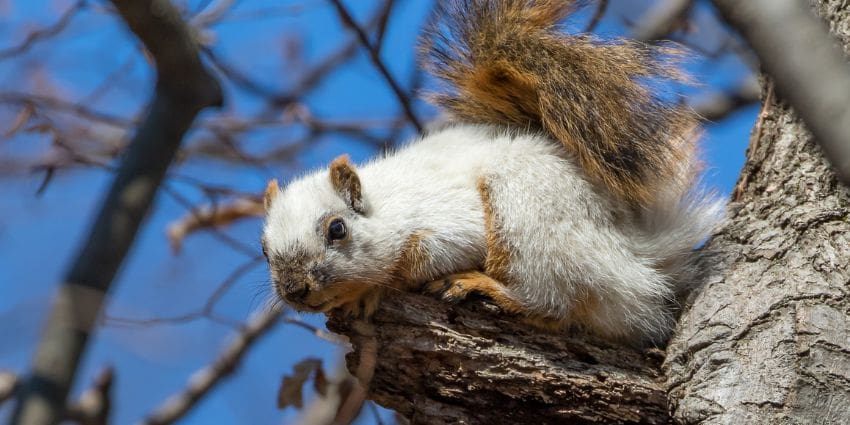
How to Stop Squirrels from Chewing on Tree Branches and Stripping Bark
There are other, safer ways to keep squirrels from chewing on tree branches. In the article Keep Squirrels Away from Your Fruit Trees, you can learn much more about how to stop squirrels from stripping bark off trees.
What Happens to Squirrels When You Cut Down Their Tree?
As a rule of thumb, cutting off branches where there is a squirrel’s nest is not advisable. You may end up harming their young.
If you cut down a squirrel’s tree, the squirrel will likely be forced to relocate. Squirrels are very territorial creatures, and they will defend their trees fiercely. If you remove a squirrel’s tree, the squirrel will have to find a new place to live.
This cannot be easy, as squirrels have specific requirements for their homes. They need a tall tree to provide them with a good vantage point, and they also need a tree with many leaves and branches to hide in. If you cut down a squirrel’s tree, the squirrel may have difficulty finding a suitable replacement.
Are Squirrels Harmful to Trees?
There is no definitive answer to this question since there is no scientific consensus. Some people believe squirrels are harmful to trees because they can damage the bark and cause the tree to become unhealthy.
Squirrel Damage to Trees
Occasionally, you may notice some squirrel damage to trees. They may choose to chew on your tree trunks, and while their sharp teeth may not demolish a fully grown tree, their teeth can severely impact younger, weaker trees.
The strips and openings that they create by stripping trees can come with the side effect of welcoming insect infestations and other harmful parasites into the trees.
Ants, termites, birds, and some microorganisms can easily access vital and more vulnerable parts of trees when the hard outer bark is stripped away by our furry friends.
Others believe squirrels help trees by eating insects that would otherwise damage the tree. Ultimately, it is up to each individual to decide whether or not they believe squirrels are harmful to trees.
Advantages of Having Squirrels in Your Trees
It’s worthwhile to keep squirrels around for several reasons. First, squirrels dig holes in the ground and help aerate the soil around trees, thus benefiting tree roots.
Both trees and humans benefit from a squirrel’s appetite for pesky insects and bugs.
Squirrels also provide some entertainment value with their zany antics and, if you think about it, a free tree pruning service.
Why Do Squirrels Nip Off Branches – Free Tree-Pruning Service
Do you have a tree in your yard that needs pruning, but you don’t have the equipment or skills needed to prune your trees? Then you may want to consider enlisting the help of a neighborhood squirrel.
Squirrels can be great allies in pruning your trees. They’re small enough to get into those hard-to-reach places but also smart enough to know when to cut a branch. Plus, they don’t require any equipment!
To get the most out of your squirrel pruners, you’ll want to ensure they have the right snacks to attract them. You don’t need anything fancy, and you might be surprised at how quickly a squirrel comes along to eat your offerings and prune your trees for free!
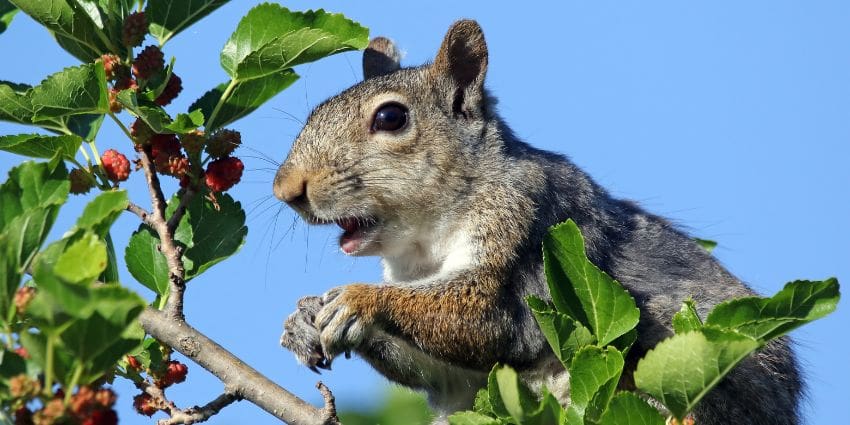
Squirrel Ya Later
So, there you have it. Whatever the reason, it’s clear that tree bark plays an essential role in squirrels’ lives.
To answer your question as to why do squirrels nip off branches? Because tree bark has so many benefits for a squirrel’s health! So, don’t be surprised the next time you see a squirrel nibbling on a branch.
Subscribe to our Free VIP Squirrel Scoop Insider magazine to keep up with the latest happenings at Kitty City Squirrels!

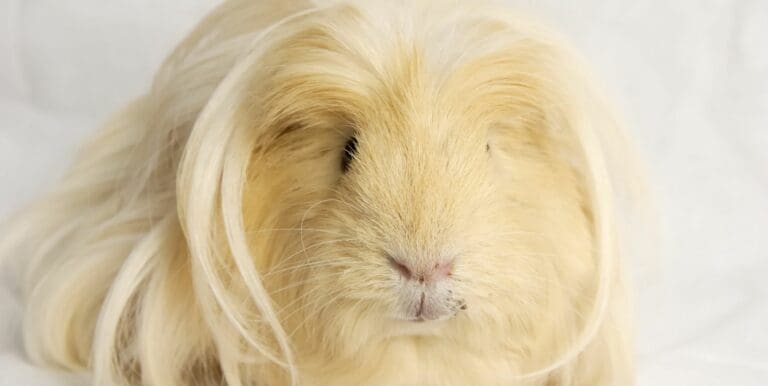
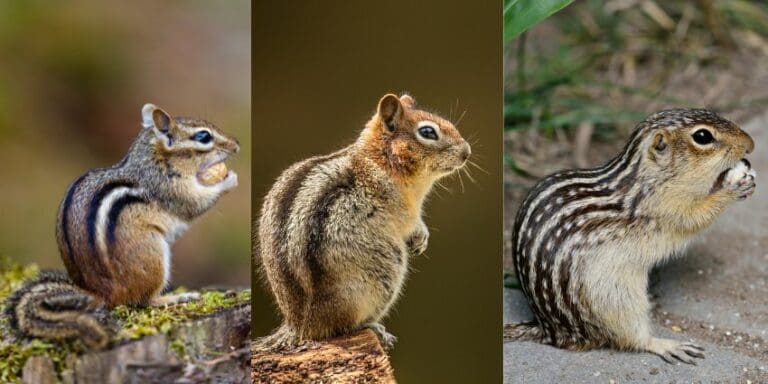
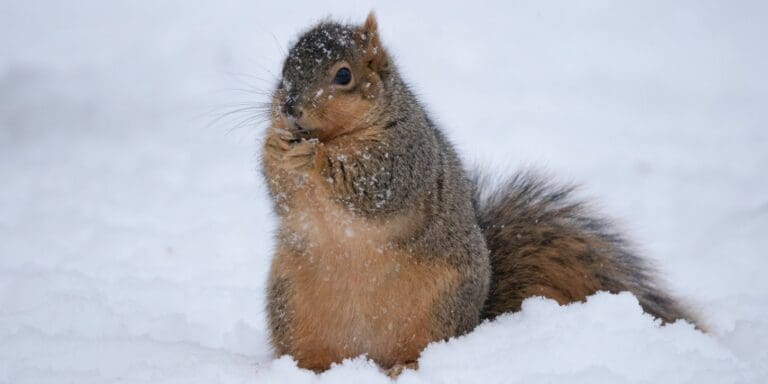
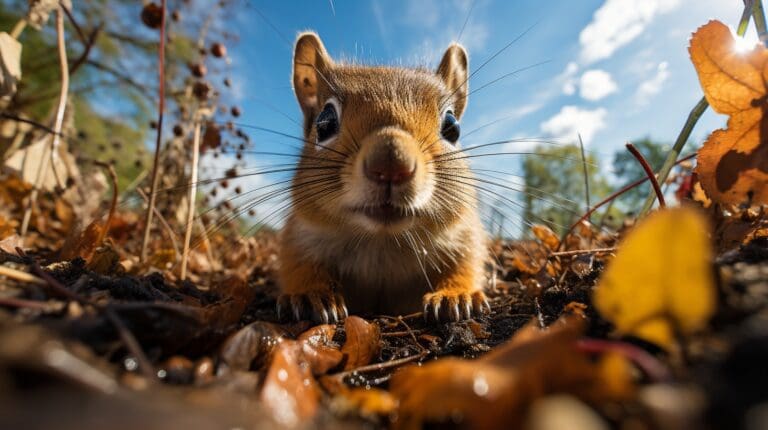
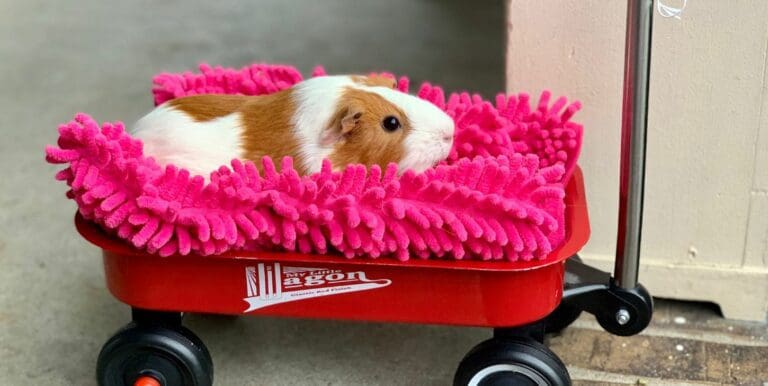
WOW!!! Another thing I didn’t know about these cuties. I’ve put cuttlebone in my Amazon cart just now. Thank you ?
Thanks Ms. B! I learned a bunch too researching this topic! Cuttlebones for everyone!
Wow! Did not know any of this! I found it quite interesting!
Thanks Sandy (wink wink), I learned a lot myself. Thanks for supporting Kitty City Squirrels and for letting me know you learned something.
Yes but the squirrels nip off a mound of pine needle branches and let them fall to the ground. It does not appear that they use any of the fallen little tops and branches.
Hi Lori, they do that here to and then just leave them to be cleaned up! Little rascals 🙂 Thank you for your support of reading the information on Kitty City Squirrels. We have a great newsletter that is fun to read. Here are some of the latest issues if you’d like to take a peek. https://archive.aweber.com/newsletter/awlist6085491
Yes I keep cleaning up piles of 4-5 inch branch tips and caught the little rascal doing it, but didn’t see him chewing them. So it seems it won’t extensively damage the tree? This tree produces a large amount of beautiful large pine cones each year, so I hoped it can continue to thrive.
Hi Patricia,
Thank you for your comment. I appreciated your message “keep cleaning up piles of 4-5 inch branch tips” as I am looking out of my window lookin at the same thing. I hope they keep their chewing under control so you pine tree thrives. I think you might enjoy Bart the squirrel’s perspective on acorns. 🙂 https://archive.aweber.com/awlist6085491/EXpgw
Maddy